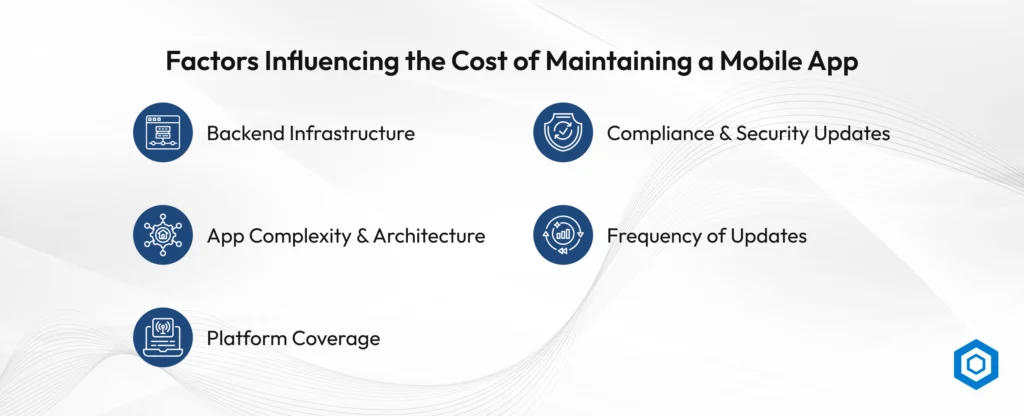
How Much Does Mobile App Maintenance Cost in 2025?
27 JUNE
In today’s highly connected world, taking a mobile app live is only half the battle. Its long-term success is essentially determined by the efficacy with which it is maintained — a factor that significantly impacts the overall mobile app Maintenance cost over time.
App maintenance encompasses bug fixes, performance tuning, feature updates, and compliance with evolving security standards. Mobile apps generated over $935 billion in revenue in 2024. But how much does mobile app maintenance cost in 2025?
Let’s review the details and take a closer look at all the factors impacting maintenance costs, what to expect after the launch, and why having a budget for use is just as important as development.
Understanding Mobile App Maintenance in 2025
Mobile apps have become increasingly complex, incorporating technologies such as AI, AR, IoT, and cloud services. Such innovations provide a fantastic user experience but require frequent updates and checks to the system. Maintaining mobile apps in 2025 is not only about debugging code; it also includes:
- Ensuring compatibility with the latest OS versions
- Managing third-party integrations
- Patching security vulnerabilities
- Monitoring performance analytics
- Updating UI/UX based on user feedback
- Adding new features or removing underused ones
Such factors contribute to the overall maintenance cost, which varies significantly depending on the type of app, industry, user base, and other factors.
Explore our portfolio to see how we’ve helped clients maintain and scale their mobile apps successfully.

Factors Influencing the Cost of Maintaining a Mobile App
Several variables influence how much you’ll spend on mobile app upkeep in 2025:
- App Complexity and Architecture
It is the more the case that the more complex your app, the more complicated its maintenance becomes. A basic productivity app will be much cheaper to maintain than a real-time, GPS-enabled rideshare app.
- Platform Coverage
Supporting an app for Android and iOS implies dealing with updates and all that goes with them for two separate codebases (unless it’s a cross-platform solution), effectively doubling some of the maintenance needs.
- Frequency of Updates
Some applications need weekly updates because of the speed of the feature roll-out, or their markets are moving fast (like fintech). In contrast, others enable their developers to do quarterly maintenance. The more often the updates are made, the higher the costs.
- Backend Infrastructure
Apps that rely heavily on cloud storage, real-time databases, or complex APIs require more intensive backend monitoring and maintenance. That can significantly overwhelm the maintenance work.
- Compliance and Security Updates
As data regulations are constantly evolving (think GDPR, CCPA, or HIPAA), your app must be compliant. Security patches and audits are non-negotiable and must be factored into your budget.
Do you have questions about your app’s upkeep or need a quick quote? Email us!
Typical Costs You Can Expect in 2025
While no two apps are the same, here are some general benchmarks:
- Small apps (simple features, single platform): $2,000–$5,000 annually
- Medium apps (moderate complexity, cross-platform): $5,000–$15,000 annually
- Enterprise apps (high complexity, cloud-based, high user volume): $20,000+ annually
These figures include updates, bug fixes, server, analytics, and basic customer support. According to some developers, 15-25% of the initial development cost should be annually reserved for maintenance.
For example, if your app costs $100,000 to build, you should anticipate spending $15,000 to $25,000 each year to maintain it in optimal condition.
Working with a Mobile App Development Company
The partnership with a trustworthy mobile app development company can help to organise the maintenance in a better way. These firms typically offer after-sales services, including maintenance contracts with costings, proactive support, and a dedicated team familiar with your mobile app’s architecture.
Such agreements eliminate the time and cost implications of hiring new developers and enable quicker resolution of issues. They can also offer tools that allow them to automate testing, code review, and performance monitoring, thereby reducing manual effort and risk.
App Maintenance Solutions to Consider
In 2025, companies will have more app maintenance solutions than ever before. From in-house teams to DevOps-as-a-Service partners and AI-aided code analyzers, a perfect match will depend on your specific needs, budget, and maturity level of your application.
Cloud-based platforms can now offer intelligent monitoring and predictive maintenance. These tools could warn you before a problem blows up, so you won’t have to experience expensive downtime or user churn.
Here are a few types of solutions commonly used:
- Managed service providers (MSPs)
- Automation tools for CI/CD pipelines
- In-app analytics platforms
- Security monitoring and vulnerability scanners
- API monitoring services
Picking a custom bundle of these tools guarantees not only performance stability but also scalability and efficiency as the number of your users increases.
Final Thoughts
The mobile app maintenance cost in 2025 is an investment the company has to make, not a burden. The digital world is changing rapidly, and user expectations are at an all-time high. Apps that fail to be regularly updated may become outdated or be deleted from app stores.
When considering your mobile app’s future plans, don’t focus solely on its launch. Consider the way it will live, grow, and change over time. If you are a startup founder or the leader of an enterprise application, it is essential to determine the actual mobile app Maintenance cost to make informed, long-term decisions.
Ready to keep your app performing at its best in 2025? Contact us today!

Frequently Asked Questions
Updates, bug fixes, performance monitoring, security patches, feature enhancements, and compatibility with OS or device changes.
Ideally, every 2–4 weeks or based on user feedback, OS changes, and feature rollouts.
Yes, regular maintenance ensures optimal performance, security, user satisfaction, and long-term app success.
Yes, estimate 15–25% of the initial development cost annually for maintenance budgeting.
It can be managed in-house or outsourced to a mobile app development company for ongoing support.




